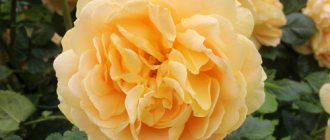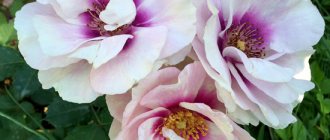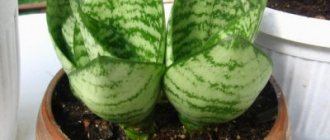Short description
Climbing rose Golden Showers is a hybrid of climber and hybrid tea rose. It was bred in 1956 by the American breeder W. E. Leimertz.
All about Golden Showers
The height of the shoots of this rose reaches up to 3 m. The leaves are dark green and glossy. With strong pruning, it can be grown as a bush.
The flowers are quite large, up to 10 cm in diameter, have a bright yellow color and a faint, pleasant aroma. As they bloom, the color of the inflorescences tends to change to a paler color. Flowering begins in mid-July and lasts all summer, with the last peak sometimes occurring in early autumn.
Important! Based on external features, this variety is often confused with Golden Climber, but these are different varieties, although they are very similar.
Climbing rose Golden Showers is one of the few continuously flowering roses that tolerate partial shade. But it should be borne in mind that the representative of this variety prefers a warm climate. In regions with temperatures below average, it is still better to choose sunny places for its placement.
Appearance
Advantages and disadvantages
Of course, this variety became a favorite among gardeners for a reason. It has many advantages:
- early and repeated flowering;
- fast growth;
- shade tolerance;
- can be given the appearance of a bush;
- pleasant aroma of flowers.
The disadvantages include the following qualities:
- weak resistance to diseases;
- thermophilicity;
- demands on soil;
- the need for special pruning.
Rose Golden Showers in landscape design
Due to its high decorative qualities, this variety is often used to decorate gazebos, arches and walls of houses.
In bush form, this rose also looks great in combination with other plants, both shrubs and flowers.
Good combination with other plants
Also, a formed plant can become a bright accent in the case of a single planting.
Climbing rose golden showers
Many gardeners are familiar with the Golden Showers rose with golden-yellow flowers and a delicate aroma. This climbing, repeat-blooming rose is ideal for growing in warm climates.
Features of the Golden Showers rose
The Golden Showers rose can rightfully be called the most popular yellow climbing rose. It was introduced in America in 1958 and is still in great demand. This unpretentious, long-flowering plant blooms from June to October, decorating the garden with sunny colors.
In mid-June, oblong golden-yellow buds appear on the bushes, which, when blooming, turn into large, double flowers with wavy petals and red stamens in the center. The flowers reach a diameter of 8-10 cm and gradually change shade from yellow to lemon.
The flowers bloom singly or in clusters throughout the summer, followed by a second abundant bloom in the fall.
The Golden Showers variety forms a vigorous, branched bush 2-3 meters high. If heavily pruned, it can be used as a bush plant. But with age, the properties of a climbing rose become more and more apparent. Large, shiny leaves gradually acquire a dark green hue. The rose has average disease resistance, but good shade tolerance.
Growing Golden Showers roses
The charming numerous flowers of the Golden Showers rose can become the main accent in the garden. It is best to grow it in an open sunny place, next to pergolas and gazebos. The rose will cover them with a screen of dense foliage and many flowers, protecting you from prying eyes.
It also looks good against the walls of houses, but you should avoid the strictly south side. It is better to choose a southeast or southwest wall. The shoots of the plant beautifully entwine various vertical supports: columns and pyramids.
Rose Golden Showers looks most impressive as a single plant. Golden sunny flowers are visible from afar. Give it a large area 2-3 meters in diameter. Plants of any shade will make an excellent company for the yellow rose Golden Showers: bright pink, blue-violet, red, etc.
rose.violet-lady.ru
| Jan | February | March | Apr | May | June | July | Aug | Sep | Oct | Nov | Dec |
| Landing | |||||||||||
| Flowering period |
www.ncsemena.ru
Description: roses Golden Showers
Golden Showers is a wonderful early blooming climbing rose for mild climates. The flowers open golden-yellow and fade to lemon, sometimes cream. They are semi-double, with wavy petals and red stamens in the center - a beautiful combination. They appear singly or in small clusters at the ends of long shoots, usually 3-5 pieces each.
After the abundant first flowering, 1-2 flowers appear all summer until the second, more abundant flowering occurs in the fall. Roshi in the cut. The shoots are thick, the foliage is shiny, bright green, somewhat susceptible to black spotting. The bush can be heavily pruned and grown in bush form. Popular in England, where the flowers are resistant to rain, and quite shade-tolerant in hot climates.
(ARE)This large-flowered climbing rose is an excellent choice for any garden in warm climates. Elongated bright yellow buds bloom into double flowers, 8-10 in diameter, with a bunch of golden stamens in the center. The flowers are initially bright yellow, goblet-shaped, but quickly open into semi-double with wavy petals, and fade to cream.
Flowers of all stages of bloom are on the bush at the same time, creating an interesting two-color effect. Flowers appear singly or in clusters, with heavy blooms in early summer followed by moderate waves in summer and often a second heavy bloom in autumn. The bush is quite vigorous, reaching 200-300.
Young bushes are quite branchy, and if desired, the variety can be kept in bush form by heavy pruning. Disease resistance is average. (TGR) This relatively short climber blooms large, semi-double, soft yellow flowers with wavy petals with red stamens, profusely in early summer and again in early autumn.
Although the variety prefers full sun, it tolerates partial shade and is suitable for northern walls. If you periodically trim the shoots, the rose can be grown as a large scrub. Rose is sensitive to cold and does best in the south. (https://www.herbs2000.com)
www.original-flowers.ru
The Golden Showers variety is known not so long ago; it was bred about 60 years ago. This is one of the most popular climbing roses. Its flowers first develop in elongated golden buds and then open into beautiful bright, juicy bursts of yellow. Flowers are collected in small brushes. The size of flowers can reach 12 cm.
The bright yellow color of the young flower will soon be replaced by a lemon tint; this is one of the interesting features of Golden Showers. Separately, it is worth noting the orange stamens located in the center of the flower. They add piquancy to this variety. Golden Showers can bloom until the first frost, so it is simply impossible not to buy this variety to decorate your plot.
By the way, light green young leaves also acquire a more saturated shade over time.
Growing
Despite the fact that Golden Showers prefers the sun, it is still not worth planting this variety on the south side of the house or fence, because in the summer the air there is too hot. Before planting, it is necessary to assess the soil.
It is better to loosen heavy clay soil with sand, while sandy soil, on the contrary, should be fed with compost or humus. The soil should not accumulate a lot of rain moisture; Golden Showers does not like this.
By the way, it is better to buy Golden Showers in bulk , because only in this case can you correctly calculate the location of the bushes in the garden.
Golden Showers, like other varieties, are planted in spring or autumn. Immediately before planting, the roots are dipped into the nutrient mixture. It is necessary to dig holes. You can also add some additional compost to the soil. It is better to plant the rose at a slight slope towards the wall of the house or fence. After the hole is filled, it is better to compact it a little.
Care
Care consists of several procedures. It is necessary to prune old shoots. Experienced gardeners also recommend cutting off wilted flowers. Golden Showers requires additional watering only in cases where there are no dodges for a long time. For good flowering, additional fertilizer can be added when buds appear.
Usage
This sunny flower is so bright that it will attract attention even in a garden where there are already many flowers. With its help, you can successfully decorate the gazebo, creating a kind of natural protection from prying eyes.
You can also draw attention to those corners of the garden that previously seemed abandoned and empty.
In a word, all you have to do is buy seedlings of Golden Showers roses, and very soon your suburban area will become unrecognizable from its unearthly beauty.
It is worth noting that the growth and beauty of this rose largely depends on the quality of the planting material, that is, on the seedlings. By choosing our online store , you can be sure that you are purchasing only the best.
The goal we set for ourselves is the well-being of our clients and the decoration of their countryside. We strive for long-term cooperation .
Delivery of seedlings is carried out strictly in accordance with the points specified in the contract.
www.flowersmoscva.ru
Rose Golden Showers: main characteristics of the variety
Source: https://cveti365.space/sadovye/rozy/pletistaya-roza-golden-shovers.html
Growing and planting in open ground
Rose Golden Celebration - variety description
Having decided to add a Golden Showers rose to your collection, the first thing you should do is purchase a seedling of this plant. It is better to give preference to specimens in pots; in this case, the root system will not be damaged during transportation.
Note! You definitely need to pay attention to the leaves of the young plant. They should be glossy and dark green in color. The presence of spots or defects may indicate a plant disease.
Since this variety is heat-loving, it is better to choose spring for planting. It is better not to rush and wait until the soil warms up well. When planted in the fall, the rose may suffer from low temperatures and even die.
When choosing a location for this flower, you should focus on the climate of the region. In areas with warm climates, placement in partial shade is acceptable. For colder regions, it is better to choose a sunny location for planting.
Important! The main thing to consider is the absence of drafts. Like many other species, this rose does not tolerate them well.
You should first prepare the soil for future planting. The soil must be mixed with sand and manure; you can add nitroammophoska as an additional fertilizer.
Before planting, the seedling should be removed from the container or packaging and placed in water at room temperature.
Planting step by step
The process of planting roses in open ground consists of several stages:
- Preparing a hole, the diameter of which is commensurate with the size of the root system of the seedling.
- Preparation of drainage (small layer of gravel, crushed stone).
- Filling the hole with part of the prepared soil.
- Placement of the seedling (be sure to spread the roots over the surface of the soil).
- Filling the hole with the rest of the prepared soil.
- Watering.
- Hilling up a seedling.
When planting, the seedling should be placed so that the grafting site is 4-5 cm below ground level.
Important! Before choosing a place and starting planting, you should consider the support for the rose, taking into account its size during future growth.
The support must be installed at the planting stage. After completing the planting process, young shoots should be tied up immediately, placing them horizontally.
Features of agricultural technology
The variety is not able to survive the winter temperatures of Central Russia; the bush should be heavily pruned and carefully covered for the winter. Without shelter it will survive only in the southern regions of Russia, and even then the branches should be covered from strong cold winds.
It does not like to grow in open, southern areas, constantly illuminated by the summer sun, but it also does not perform well in the shade - the flowers become small and dull. The best place for growth is walls of eastern and western orientation.
Plant care
Rose Palais Royal - climber characteristics
For good growth and lush flowering, the plant should be provided with proper care. It usually includes watering, fertilizing, pruning and providing winter protection. The Golden Showers rose has its own requirements.
Watering
This variety tolerates drought well, but waterlogging can negatively affect its growth and development.
Watering should be carried out once a week in the amount of 10-15 liters of water per bush. This rate can be increased only in very dry weather. Water for irrigation should only be taken at room temperature.
Feeding
Golden Showers is quite demanding on the quality of the soil and the presence of a large amount of nutrients in it. In addition to the initial preparation of the soil when planting, it is also necessary to regularly feed the plant.
Fertilizers are needed
In the spring, nitrogen fertilizers are perfect for this. They will help the plant gain vegetative mass and prepare for flowering.
In summer, it is better to apply potassium-phosphorus fertilizers. The rose is also responsive to organic fertilizers during this period. Thanks to the timely receipt of the necessary nutrients, the plant will have enough strength to bloom abundantly.
Pruning and replanting
For climbing roses, pruning is an important care item. It must be carried out correctly and in a timely manner.
Proper pruning is essential
The first pruning is carried out in the spring, when the threat of frost has passed. Depending on the form in which the plant is grown, as a bush or as a climber, depends on how severe the pruning should be.
- In the case of growing as a bush, the shoots are shortened greatly, leaving only 3-4 buds.
- If the rose should remain climbing, the cutting height of the shoots is greater, 7-8 buds should be left.
All dry shoots and those that have suffered after wintering should also be removed.
Important! During the flowering period in summer, faded inflorescences should be regularly removed to encourage re-blooming.
Autumn pruning consists of thinning the bush, if necessary, and removing diseased shoots. It should be carried out in such a way that before the onset of cold weather the plant has time to move away from this procedure and get stronger.
It is advisable to avoid replanting climbing roses. Especially if the plant is already fixed to a support. But, if such a need does arise, you need to approach this process responsibly.
You can start planting in a new place in the spring or summer. Spring is preferable, but in this case it is worth preparing the plant in the fall. It is necessary to dig up the root system in a circle in advance and fill the resulting gap with sand. In the spring, all you have to do is remove the lump from the ground and move it to a new place.
If you need to replant the rose in the summer, you need to remove all the flowers and shorten the shoots by half. After this, the plant should be moved to a new planting location.
Planting is carried out in the same way as for young seedlings. Unless the hole should be larger in diameter.
Wintering
Rose Golden Showers, like most roses, requires shelter for the winter. They begin to prepare the plant for wintering in September. To do this, the lashes are removed from the supports and bent to the ground. This way they will get used to the horizontal position. Before covering the bush, the shoots are pinned to the ground.
Note! It is better to place fallen leaves or grass under the laid lashes. The top of the rose is covered with non-woven white material or spruce branches.
Bloom
Thuja Golden Globe - description
Each plant has a period of active growth and dormancy. This should be taken into account when caring for it.
Abundant flowering
The most active period for climbing roses is the flowering period. For Golden Showers it starts in mid-July and lasts almost until autumn. At this time, the rose requires increased care. It is necessary to regularly fertilize and remove faded inflorescences. You should also monitor watering, especially if the weather is dry.
Important! The dormant period begins in late autumn. At this time, the main task is to protect the plant from the upcoming cold weather. To do this, it should be prepared, that is, minor pruning should be done and the shoots should be removed from the support.
Why might it not bloom?
If all care rules are followed, the Golden Showers rose will delight you with abundant flowering. If it refuses to bloom, there may be several reasons for this:
- lack of light;
- lack of nutrients;
- poor watering;
- presence of diseases and pests;
- improper pruning or neglect of it.
Only after analyzing all possible causes will it be possible to find a solution to the problem.
Reproduction
The best time to obtain new seedlings is from May to the end of summer. For climbing roses there are two methods of propagation:
- cuttings;
- layering.
Propagation by cuttings can be divided into stages.
- The first step is to choose a healthy shoot, preferably one that has faded, cut it and divide it into parts so that each has 2-3 buds. The lower cut is made at an angle of 45°, the upper one is horizontal. The leaves are either removed all, or only the top ones can be left.
- Next, the prepared cuttings are placed in a stimulant solution to speed up the process of root emergence.
- After treatment, planting is done in the ground, which is pre-mixed with sand.
- The planted cuttings are covered with a glass jar.
It is better to resort to the method of propagation by layering in the spring. After removing the shelter, suitable shoots are not tied to the support, but are left pinned to the ground. Next, you just need to make sure that the soil where the roots appear remains moist. After the cuttings take root, they can be cut off from the adult plant and planted in a permanent place.
History of origin
This rose, popular to this day, was created in the first half of the 50s of the last century in California, through the works of the famous specialist, Dr. Walter Lammertz. Under its current name, it was first presented at the 1956 exhibition by Germain Seed & Plant Co.
It is known that to create the variety, the breeder used two varieties popular in the USA: Charlotte Armstrong and Captain Thomas.
Already in 1957, the new product received its first serious diplomas at American exhibitions. And her last medal was awarded in 2000. Until now, as already mentioned, the demand for this variety has not decreased.
Diseases and pests
Golden Showers are not particularly resistant to diseases and pest attacks. The most common ailments it suffers from are powdery mildew and leaf spot. It can also be affected by various pests, most often aphids.
Important! To maintain plant health, preventive treatment with special preparations should be carried out regularly. There are quite a lot of them for roses.
Only a healthy plant will grow fully and delight the eye with abundant and long-lasting flowering.
Among the family of climbing roses, Golden Showers stands out in that it is able to grow and bloom in semi-shaded places. But in areas with a cool climate, it is still better to choose a sunny place for it. The main thing is that the plant is not exposed to wind and drafts.
This species is responsive to fertilizers, both mineral and organic. They should be applied in the spring and throughout the summer until the end of the flowering period.
Pruning is very important for this variety. It must be carried out promptly and correctly. Do not forget that during the flowering period you should regularly remove wilted inflorescences.
Periodic treatment against pests and diseases is necessary. It will keep the plant healthy and give it the opportunity to fully develop. With proper care, the Golden Showers rose will delight the eye throughout the summer with its lush and fragrant blooms.
Description of the early-blooming climbing rose variety Golden Showers: plant characteristics
Climbing roses have a special charm; their abundant blooms are mesmerizing. Among the many varieties, it is worth paying attention to Golden Showers.
The biggest advantage of this variety is its shade tolerance, which allows it to be placed even in shady corners of the garden. It is this factor that makes this species so popular among gardeners and landscape designers.
Wintering
Rose Golden Showers, like most roses, requires shelter for the winter. They begin to prepare the plant for wintering in September. To do this, the lashes are removed from the supports and bent to the ground. This way they will get used to the horizontal position. Before covering the bush, the shoots are pinned to the ground.
Note! It is better to place fallen leaves or grass under the laid lashes. The top of the rose is covered with non-woven white material or spruce branches.
Bloom
Thuja Golden Smaragd - description
Each plant has a period of active growth and dormancy. This should be taken into account when caring for it.
Abundant flowering
The most active period for climbing roses is the flowering period. For Golden Showers it starts in mid-July and lasts almost until autumn. At this time, the rose requires increased care. It is necessary to regularly fertilize and remove faded inflorescences. You should also monitor watering, especially if the weather is dry.
Important! The dormant period begins in late autumn. At this time, the main task is to protect the plant from the upcoming cold weather. To do this, it should be prepared, that is, minor pruning should be done and the shoots should be removed from the support.
Why might it not bloom?
If all care rules are followed, the Golden Showers rose will delight you with abundant flowering. If it refuses to bloom, there may be several reasons for this:
- lack of light;
- lack of nutrients;
- poor watering;
- presence of diseases and pests;
- improper pruning or neglect of it.
Only after analyzing all possible causes will it be possible to find a solution to the problem.
Reproduction
The best time to obtain new seedlings is from May to the end of summer. For climbing roses there are two methods of propagation:
Propagation by cuttings can be divided into stages.
- The first step is to choose a healthy shoot, preferably one that has faded, cut it and divide it into parts so that each has 2-3 buds. The lower cut is made at an angle of 45°, the upper one is horizontal. The leaves are either removed all, or only the top ones can be left.
- Next, the prepared cuttings are placed in a stimulant solution to speed up the process of root emergence.
- After treatment, planting is done in the ground, which is pre-mixed with sand.
- The planted cuttings are covered with a glass jar.
It is better to resort to the method of propagation by layering in the spring. After removing the shelter, suitable shoots are not tied to the support, but are left pinned to the ground. Next, you just need to make sure that the soil where the roots appear remains moist. After the cuttings take root, they can be cut off from the adult plant and planted in a permanent place.
Diseases and pests
Golden Showers are not particularly resistant to diseases and pest attacks. The most common ailments it suffers from are powdery mildew and leaf spot. It can also be affected by various pests, most often aphids.
Important! To maintain plant health, preventive treatment with special preparations should be carried out regularly. There are quite a lot of them for roses.
Only a healthy plant will grow fully and delight the eye with abundant and long-lasting flowering.
Among the family of climbing roses, Golden Showers stands out in that it is able to grow and bloom in semi-shaded places. But in areas with a cool climate, it is still better to choose a sunny place for it. The main thing is that the plant is not exposed to wind and drafts.
This species is responsive to fertilizers, both mineral and organic. They should be applied in the spring and throughout the summer until the end of the flowering period.
Pruning is very important for this variety. It must be carried out promptly and correctly. Do not forget that during the flowering period you should regularly remove wilted inflorescences.
Periodic treatment against pests and diseases is necessary. It will keep the plant healthy and give it the opportunity to fully develop. With proper care, the Golden Showers rose will delight the eye throughout the summer with its lush and fragrant blooms.
Source: https://pocvetam.ru/sadovye-tsvety/rozy/golden-sauers.html
Rose Golden Showers: appearance and characteristic features
Rose Golden Showers belongs to the climbers (types of climbing roses that bloom several times per season) and is an early-blooming variety. It has elongated, bright yellow buds, shaped like glasses.
The flowers are semi-double, rich in color, with wavy petals. They are formed either single or in small clusters of up to 4-5 pieces. The shoots of the variety are thick, strong, the leaves are bright green, shiny, similar to glossy.
Golden Showers blooms profusely
The variety was bred in the middle of the last century in the USA and very quickly won the love of flower growers around the world. It is especially popular in England.
For your information! The plant tends to branch heavily and can grow up to 2-3 m in height. The flowers fade over time and turn from bright yellow to cream. Therefore, the presence of flowers of varying degrees of maturity on the bush creates the effect of a plant shimmering with different colors.
After abundant flowering at the beginning of the season, single flowers periodically appear on the bush during the summer, and in the fall the rose opens buds again. A characteristic feature of the variety is the good resistance of flowers to rain, after which they do not lose their decorative appearance, and shade tolerance.
The variety is often planted near walls or supports
Note! If the climbing rose Golden Showers is pruned low, it will produce a bush plant that produces beautiful cut flowers.
Advantages and disadvantages of the variety
The climbing rose Golden Showers has certain advantages that allow you to make a choice in its favor:
- abundant flowering several times per season;
- good response to care - the plant will respond with gratitude to the care shown to it;
- delicate unobtrusive aroma;
- early flowering;
- the ability to quickly form lashes under the right conditions;
- good resistance of flowers to rain;
- in warm climates the plant tolerates shade well;
- the presence of a small number of thorns on the branches.
When pruned low, the plant looks like a scrub
Unfortunately, the climber is not without some disadvantages:
- increased thermophilicity of the variety;
- average level of plant resistance to fungal diseases;
- not too long flower life.
However, given the many advantages of the Golden Showers rose, and most importantly, its stunning appearance, with good care these disadvantages are not too significant to refuse to plant such a colorful bush on your site.
Application in landscape design
Most often, the rose, given its ability to climb, is used to decorate vertical structures, when planted near walls, near gazebos and gazebos.
Also, Golden Showers are often grown with low pruning as a tall shrub and used in group plantings and as a tapeworm.
This type of cultivation is most often used in colder climatic zones with harsh winters, which the plant cannot withstand; it must be heavily covered.
Blooming semi-double flowers with wavy petals
Basic growing rules
In order to boast abundant and long-lasting flowering of a bright bush, the Golden Showers rose needs to be provided with acceptable conditions and proper care. The latter consists of the correct choice of soil and planting site, as well as watering and fertilizing throughout the season.
Selecting a location
Rose Golden Celebration - variety description
The location for planting the variety depends on the climatic conditions of the area. So, in mild climates and warm winters, planting the plant in partial shade is allowed. But in conditions with lower temperatures, it is advisable to plant roses in sunny areas, otherwise in the shade its flowers will become pale and small.
It is important to avoid drafts and plant in areas blown by sharp cold winds; the plant does not like this.
Important! During planting, it is important to immediately take care of installing a support for the climbing rose. Its dimensions should correspond to the future size of the bush. Immediately after planting, the shoots are fixed on a support, tied horizontally.
Soil requirements
The soil for planting Golden Showers roses should be nutritious, moist and well-drained. If necessary, this should be taken care of immediately upon planting. In denser soils, it is necessary to add drainage material to the bottom of the planting holes, otherwise moisture may stagnate during irrigation, which often causes the development of fungal diseases.
If the soil is not highly fertile, you should dilute it with manure and sand, and also add nitroammophoska.
Rose looks great in group plantings
Rose blossom
The period of mass flowering of the variety lasts from July until autumn. During this period, the plant needs careful care.
Care during and after flowering
Thuja Golden Smaragd - description
To maintain flowering, the rose needs to be fed regularly, watered periodically and do not forget to remove weeds and loosen the soil.
Note! To maintain a decorative appearance and stimulate further flowering, remove faded buds.
Possible problems during cultivation
The most important problem that gardeners face when growing the Golden Showers variety is the lack of flowering. This can happen for several reasons:
- insufficient lighting;
- damage by diseases or pests;
- insufficient amount of nutrients;
- incorrect pruning or its complete absence;
- insufficient watering.
Golden Showers need to be protected from drafts
Only by eliminating shortcomings in plant care can you achieve abundant flowering.
For your information! For northern regions, wintering the plant is a problem; it needs careful shelter, otherwise it may freeze.
Reproduction methods
Climbing roses can be propagated in two ways: cuttings and layering. The cutting procedure is carried out from mid-May to the end of summer. To do this, a healthy shoot that has flowered is cut into cuttings with 2-3 buds, treated with a solution to quickly form roots and rooted in the substrate.
The layering method is used in the spring. After removing the cover, some branches are left fixed on the ground and periodically moisten the soil. After a good root system has formed, the shoot is separated and planted independently.











